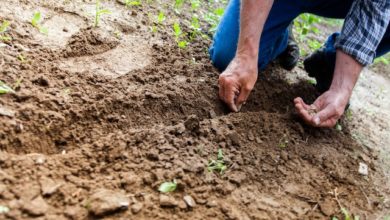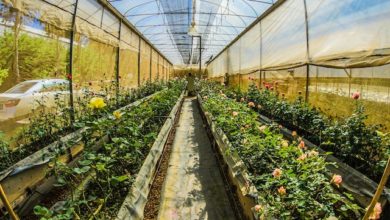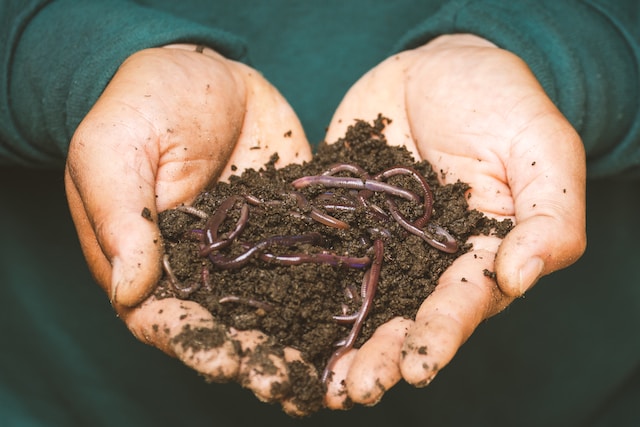
Benefits of Composting Worms
Composting is a great way to reduce waste and help the planet. Composting is a process of breaking down organic materials, such as kitchen and yard waste, into a more useful form such as soil. Composting is not only easy but it also offers many benefits. One of the best options for composting is to use composting worms. Composting worms are small, composting worms that turn organic materials into valuable soil. In this article, we will explore the benefits of composting worms.
The Role of Composting Worms in Sustainable Living
Composting is a natural process that involves the decomposition of organic materials such as kitchen scraps, yard waste, and paper products. Through the breakdown of these materials, compost is created, which is a nutrient-rich soil amendment that can be used to enrich garden soil, nourish plants, and promote sustainable living practices.
Composting plays a vital role in sustainable living as it helps reduce the amount of waste that ends up in landfills, decreases greenhouse gas emissions, conserves water, and improves soil health. By diverting organic waste from landfills, composting reduces the production of harmful methane gas and reduces the need for chemical fertilizers, ultimately contributing to a healthier environment.
Composting worms and their role in this process
One key element in the composting process is the involvement of special creatures: composting worms. These worms, often known as red wigglers or Eisenia fetida, are different from the typical earthworms found in your garden. Composting worms thrive in decomposing organic matter and have a remarkable ability to convert kitchen scraps and garden waste into nutrient-rich castings, also known as worm castings or vermicompost.
Unlike earthworms, composting worms possess specific characteristics that make them ideal for composting. They prefer darker and more decomposable materials, have a higher reproduction rate, and thrive in the controlled environment of a worm bin or composting system. Through their efficient digestive process, these worms consume organic waste, break it down, and excrete highly fertile worm castings that significantly enhance the compost and soil quality.
Benefits of incorporating composting worms into your composting system
Incorporating composting worms into your composting system offers a range of benefits that go beyond traditional composting methods. These benefits include:
- Accelerated decomposition: Composting worms increase the breakdown rate of organic materials, turning them into nutrient-rich compost much faster than traditional composting methods. Their voracious appetite and constant movement within the compost pile enhance aeration and accelerate the decomposition process.
- Enhanced nutrient content: When organic waste is processed by composting worms, the resulting worm castings are teeming with beneficial microorganisms, enzymes, and nutrients. These nutrient-dense castings are packed with essential minerals, trace elements, and beneficial bacteria that nourish plants and promote healthy growth.
- Increased moisture retention: Vermicompost, created by composting worms, has excellent water retention capabilities, allowing the soil to stay moist for longer periods. This is particularly beneficial in arid or dry regions where water conservation is crucial for sustainable gardening practices.
- Pest and disease control: The microorganisms present in worm castings act as a natural defense against pests and diseases. The beneficial bacteria and enzymes suppress harmful pathogens and promote a healthy soil ecosystem, reducing the need for chemical pesticides or fungicides.
- Sustainable waste management: Incorporating composting worms into your composting system enables you to reduce organic waste sent to landfills, contributing to a more sustainable waste management solution. It also serves as a valuable educational tool for teaching others about the importance of responsible waste disposal and the potential of composting.
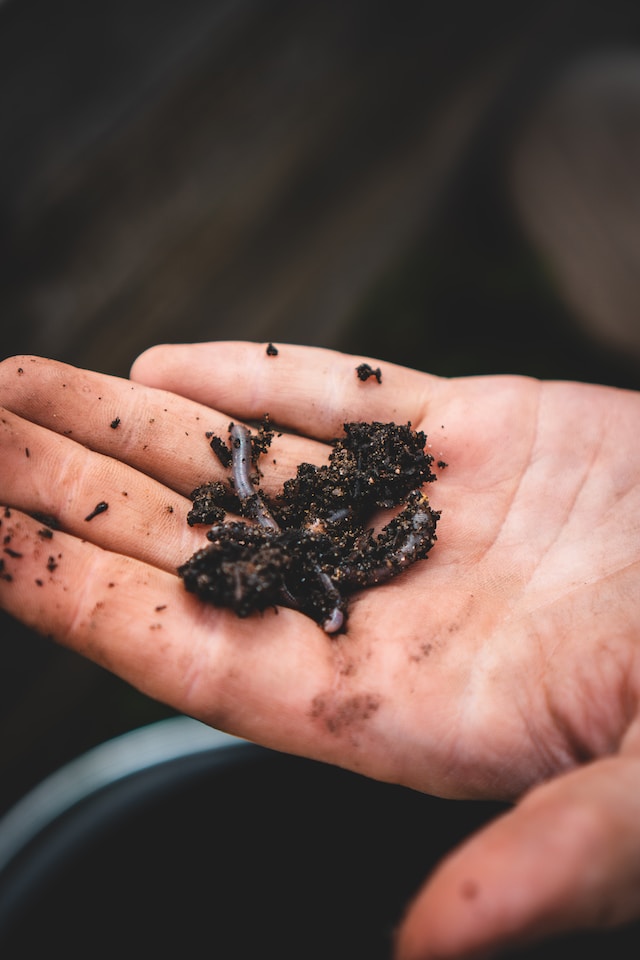
The Types of Composting Worms
When it comes to composting, not all worms are created equal. Certain worm species have shown exceptional characteristics and traits that make them ideal for the process.
Here, we will explore the common species used in composting and delve into their unique qualities. Get ready to meet the stars of the composting world: Red Wigglers (Eisenia fetida) and European Nightcrawlers (Eisenia hortensis).
Red Wigglers, scientifically known as Eisenia fetida, are perhaps the most popular type of worm used in composting. These little creatures are voracious eaters, making them perfect for breaking down organic waste quickly. Their ability to consume approximately half their body weight in food every day is truly remarkable. As their name suggests, Red Wigglers possess a distinctive reddish-brown coloration, helping them stand out among other earthworms.
Another worm species commonly utilized in composting is the European Nightcrawler, or Eisenia hortensis. As its name implies, these worms are native to Europe but have made their way into composting systems worldwide. European Nightcrawlers are larger than Red Wigglers and boast exceptional burrowing capabilities. Their burrows improve soil aeration, drainage, and nutrient circulation within the compost. Furthermore, these worms have a high tolerance for varying temperatures, which makes them adaptable to a broad range of composting conditions.
The traits that both Red Wigglers and European Nightcrawlers possess make them highly suitable for composting. Not only are they excellent decomposers, but they also have a remarkable ability to convert organic waste into nutrient-rich vermicompost, commonly known as worm castings.
Vermicompost, often referred to as black gold, is a valuable fertilizer that enhances soil quality and promotes plant growth. Additionally, the castings help control plant diseases and deter pests naturally, making them a gardener’s dream come true.
So, how can you acquire these remarkable composting worms?
Fortunately, there are a couple of methods. One option is to purchase them from reputable worm suppliers. Many online stores and local gardening centers offer Red Wigglers and European Nightcrawlers for sale. It’s essential to ensure that the worms you buy are healthy, vigorous, and suitable for your specific composting needs.
Alternatively, sourcing worms from worm farms is another viable solution. Worm farms are specialized facilities that cultivate composting worms, ensuring their quality and health. These farms often sell worms to individuals or businesses looking to start their own composting setups. By sourcing worms from worm farms, you can be confident that you’re getting top-notch organisms bred specifically for composting.
Enhancing Composting Efficiency
It is now time to explore how worms can significantly enhance the efficiency of the composting process, accelerating decomposition, improving soil fertility, and creating an ideal environment for beneficial microorganisms.
- Accelerating Decomposition Through Worms
One of the most remarkable aspects of using worms in composting is their ability to accelerate the decomposition and breakdown of organic waste. Worms, such as red wigglers, are highly efficient at consuming organic materials due to their voracious appetite. As they feed on the waste, it passes through their digestive system, where it is partially decomposed.
The worms not only consume the organic waste but also facilitate the breakdown process by mechanically grinding and mixing the materials. Their constant movement helps to create a well-mixed compost pile, ensuring that the waste is exposed to more surface area, improving microbial activity and decomposition rates.
- Aeration of the Compost Pile
In addition to accelerating decomposition, worms are beneficial in creating an ideal environment for beneficial microorganisms by aerating the compost pile. As worms move through the organic matter, they create tunnels or burrows, which act as natural air passages. These passages allow oxygen to circulate more freely within the pile.
Adequate oxygen is essential for the growth and activity of beneficial microorganisms involved in the decomposition process. These microorganisms, which consist of bacteria, fungi, and actinomycetes, require oxygen for their metabolic processes. By aerating the compost pile, worms ensure that the beneficial microorganisms thrive, leading to faster decomposition and the production of high-quality compost.
- Role of Worm Castings in Enriching Soil Fertility and Structure
One of the most valuable byproducts of worm composting is worm castings, also known as vermicompost. Worm castings are rich in essential nutrients and beneficial microorganisms. When these castings are added to soil, they significantly enhance soil fertility and structure.
The worm castings contain a variety of macro and micronutrients, including nitrogen, phosphorus, potassium, calcium, magnesium, and trace elements. These nutrients are readily available in a form that can be easily absorbed by plants, promoting healthy growth and productivity. Moreover, the presence of beneficial microorganisms in vermicompost improves soil structure by enhancing aggregation, water retention, and aeration.
By incorporating worm castings into soil, gardeners and farmers can effectively improve its fertility, resulting in healthier plants, increased yields, and reduced reliance on synthetic fertilizers.
Waste Reduction and Environmental Impact
Composting worms are small but mighty creatures that hold the key to diverting organic waste from landfills and reducing our environmental impact. In this chapter, we will explore the significance of composting worms in waste reduction, the deceleration of methane gas emissions, and the long-term environmental benefits of composting.
Diverting Organic Waste from Landfills
Composting worms, such as red wigglers, are expert recyclers. These voracious eaters consume organic matter, breaking it down into rich, nutrient-dense compost. By introducing composting worms into our waste management systems, we can divert a significant portion of organic waste from ending up in landfills.
- Reducing landfill space: Organic waste, such as food scraps and yard trimmings, accounts for a substantial portion of our municipal waste. By diverting this organic waste to composting systems, we can decrease the amount of waste occupying precious landfill space. This allows us to prolong the lifespan of existing landfills and reduce the need for costly expansions.
- Preventing greenhouse gas emissions: When organic waste decomposes in landfills without oxygen, it produces methane gas, a potent greenhouse gas that contributes to climate change. Composting worms play a vital role in diverting organic waste from landfills where it would generate methane emissions. With their help, we can significantly reduce the release of harmful greenhouse gases into the atmosphere.
Reducing Methane Gas Emissions
The decomposition of organic matter in the absence of oxygen, also known as anaerobic decomposition, is the primary source of methane gas emissions from landfills. By composting organic waste using worms, we shift the decomposition process to an aerobic environment.
- Aerobic decomposition: Composting with worms facilitates aerobic decomposition, where organic matter breaks down in the presence of oxygen. This aerobic decomposition process significantly reduces the production of methane gas, as the worms promote the growth of beneficial microorganisms that thrive in oxygen-rich environments. By turning food scraps into valuable compost through composting worms, we not only transform waste into a valuable resource but also curb the release of methane gas.
Long-Term Environmental Benefits of Composting
Composting with worms extends numerous long-term environmental benefits beyond waste reduction and methane gas emission reduction. The advantages are far-reaching and impact both soil health and agriculture practices.
- Improved soil health: Compost produced by worms is a powerful organic fertilizer that greatly enhances soil health. Compost improves soil structure, increasing its ability to retain water and nutrients. Additionally, the organic matter in compost provides vital nutrients to plants, promoting healthy growth, and reducing the need for synthetic chemical fertilizers. Composting not only reduces waste but also enriches our soil, fostering a healthier environment for flora and fauna alike.
- Reduced chemical fertilizer dependency: Conventional agriculture heavily relies on chemical fertilizers to sustain crop growth. However, with the introduction of worm compost, farmers and gardeners can reduce their dependency on these synthetic fertilizers. Compost acts as a natural alternative, providing essential nutrients, improving soil fertility, and supporting sustainable agriculture practices. By embracing composting with worms, we can mitigate the environmental impact associated with chemical fertilizers while creating a more sustainable and resilient food production system.
Creating a Home for Composting Worms
By following these simple steps, you’ll be able to harness the power of these slimy creatures and turn your kitchen scraps into nutrient-rich humus for your plants.
Setting up a Worm Bin or Vermicomposting System
To get started with your own worm composting system, you’ll need to set up a suitable home for your composting worms. Follow these guidelines for a successful setup:
1. Container selection: Choose a container that is large enough to accommodate the amount of organic waste you generate but not too big for the worms to effectively break down the waste. An old storage bin, wooden box, or even a specialized worm bin can serve as an excellent home for your worms.
2. Ventilation and drainage: Ensure proper ventilation by creating small holes in the container to allow airflow. Additionally, drill holes in the bottom for drainage to prevent excess moisture accumulation.
3. Bedding material: Provide a bedding material that worms can burrow in and use for insulation. Shredded newspaper, coconut coir, or straw make excellent bedding choices. Moisten the bedding to create a damp but not soggy environment.
4. Introduce the worms: Acquire composting worms, such as red wigglers (Eisenia fetida), from a reputable source. Add these worms to the bedding and allow them to settle in for a day or two before feeding them.
Creating an Optimal Environment for Worms
Maintaining the right conditions is crucial for the well-being and productivity of your composting worms. Consider the following factors:
- Temperature control: Composting worms thrive in temperatures between 55°F and 77°F (13°C and 25°C). Keep your worm bin away from direct sunlight or extreme temperature fluctuations. During colder months, provide insulation or move the bin indoors to maintain a suitable temperature.
- Moisture management: Proper moisture is essential for worm health. Monitor the moisture content by squeezing a handful of bedding and ensuring it holds together without releasing excess water. Sprinkle water as needed to keep the bedding moist but not waterlogged.
Suitable Foods for Composting Worms
Offering a balanced diet to your composting worms will enhance their composting prowess. Follow these guidelines for selecting foods:
- Ideal foods: Composting worms thrive on a wide range of kitchen scraps such as fruit and vegetable peels, coffee grounds, tea bags, and crushed eggshells. These provide valuable nutrients for their growth and reproduction.
- Foods to avoid: Prevent adding meat, dairy products, oily foods, citrus fruits, and highly acidic or spicy foods. These can lead to foul odors, attract pests, and harm the delicate ecosystem within the worm bin.
Harvesting and Using Worm Castings
Here, we will explore the process of separating worm castings from the composting bin, discuss the numerous benefits they offer, and provide guidelines on how to properly apply them to maximize their effectiveness.
Separating Worm Castings
To harvest worm castings from your composting bin, follow these steps:
1. Prepare a work area: Clear a space where you can comfortably handle the compost and separate the castings. Lay down a sheet or tarp to catch the castings and prevent any mess.
2. Stop feeding the worms: Around two weeks prior to harvesting, cease adding new food scraps to the bin. This helps redirect the worms’ attention to the existing material, allowing them to process it fully.
3. Create a feeding mound: On one side of the bin, create a fresh mound of food scraps and bedding materials. This will lure the worms away from the castings, making them gather in one location.
4. Light and moisture trick: To further encourage the worms to move away from the castings, shine a light source on one side of the bin and keep the other side slightly drier. Worms dislike light and seek moisture, so they will instinctively migrate to the darker and moister side.
5. Harvesting castings: After a few days, carefully scoop off the top layer of the bin, which contains the worm bedding, undecomposed materials, and worms. Set this aside for future use. The bottom layer will consist predominantly of worm castings. Use your hands or a small garden rake to separate the castings from any remaining worms or larger contaminants. Work through the material methodically, transferring the castings to a separate container.
Benefits of Using Worm Castings
The utilization of worm castings provides an array of benefits for your plants and soil:
- Nutrient-rich organic fertilizer: Worm castings are packed with essential nutrients such as nitrogen, phosphorus, potassium, calcium, and magnesium. These nutrients are released slowly and consistently, providing a constant supply to plants without the risk of burning their roots.
- Improved soil structure: The organic matter in worm castings enhances soil structure, promoting better aeration, water retention, and root development. This leads to healthier and more productive plants.
- Enhanced soil microbial activity: Worm castings are teeming with beneficial microorganisms that improve soil biodiversity. They help break down organic matter, improve nutrient availability, suppress harmful pathogens, and create an overall healthier soil ecosystem.
- Disease and pest resistance: The diverse microorganisms in worm castings can help fend off various plant diseases and pests, reducing the need for harmful chemical interventions.
Applying Worm Castings Properly
To maximize the benefits of worm castings, follow these guidelines when applying them:
1. Preparing the soil: Before planting, mix worm castings into the soil at a ratio of approximately 10-20% by volume. This ensures a uniform distribution of nutrients and organic matter throughout the planting area.
2. Topdressing and mulching: Sprinkle a thin layer of worm castings around the base of established plants. This acts as a slow-release fertilizer and enriches the top layer of soil. Cover the castings with a layer of organic mulch to retain moisture and further enhance their effectiveness.
3. Compost tea: Create a nutrient-rich liquid fertilizer by steeping a small amount of worm castings in water for 24-48 hours. Dilute the resulting mixture and use it to water your plants. This provides an instant boost of nutrients and beneficial microorganisms.
Troubleshooting and Maintenance
Composting with worms can be an effective and eco-friendly way to convert organic waste into nutrient-rich compost for your garden. However, like any form of gardening, it is not without its challenges. In this chapter, we will address common issues that may arise when composting with worms, provide solutions for problems such as pest control and odor management, and outline basic maintenance practices to ensure a healthy and productive worm composting system.
Addressing Common Issues
- Slow decomposition: If you notice that your compost is taking longer than usual to break down, it could be due to factors such as improper moisture levels, inadequate aeration, or incorrect worm density. Ensure your compost bin is properly moistened, provide enough air circulation, and consider adjusting the number of worms in the system.
- Unpleasant odor: A foul odor emanating from your worm composting system can indicate an imbalance in the composting process. Too much moisture, overfeeding, or an excessive presence of nitrogen-rich waste can cause odor issues. Regularly monitor and adjust moisture levels, control the amount of food you provide, and balance carbon (browns) and nitrogen (greens) waste materials.
- Fruit flies and other pests: Fruit flies are a common issue in worm composting, particularly when food scraps are exposed or not adequately covered. To control fruit flies and other pests, cover your food scraps with a layer of damp newspaper or shredded paper, avoid overfeeding, and ensure proper ventilation within the composting system.
Solutions for Pest Control and Odor Management
- Vermicompost tea: If odor issues persist, you can create a vermicompost tea – a liquid extract derived from worm compost and water. Dilute the compost in water, let it steep, and use the resulting solution to water your plants. Vermicompost tea not only helps in managing odor but also serves as a natural fertilizer.
- Beneficial nematodes: If pests like fungus gnats or mites become a recurring problem, introducing beneficial nematodes into the compost bin can help control their population. These microscopic organisms feed on pests and can serve as a natural form of pest control.
- Diatomaceous earth: When faced with persistent pest issues, applying diatomaceous earth around the perimeter of your composting system can act as a physical barrier and deter crawling pests. However, be cautious not to directly expose your worms to this substance, as it can harm them.
Basic Maintenance Practices
- Regular monitoring: To maintain a healthy worm composting system, regularly monitor factors such as moisture levels, temperature, and worm population. Make adjustments accordingly to ensure optimal conditions.
- Harvesting compost: Harvest finished compost regularly to make space for new organic waste. Follow proper harvesting techniques to separate worms from the compost effectively.
- Bedding maintenance: Periodically check the bedding material in your compost bin. If it appears to be breaking down or is too compact, add fresh bedding materials like shredded newspaper, cardboard, or coconut coir to maintain the necessary habitat for the worms.
Conclusion
In conclusion, worm composting, or vermicomposting, is a game-changer for both the environment and personal gardening projects. We have explored the countless benefits of introducing composting worms into our lives, from reducing waste and greenhouse gas emissions to producing nutrient-rich soil for our plants.
By embracing vermicomposting, we are not only improving our immediate surroundings but also contributing to a more sustainable future. The impact of our actions reaches far beyond our own backyard. Each composting worm bin established is a small step towards a greener, more eco-friendly world.
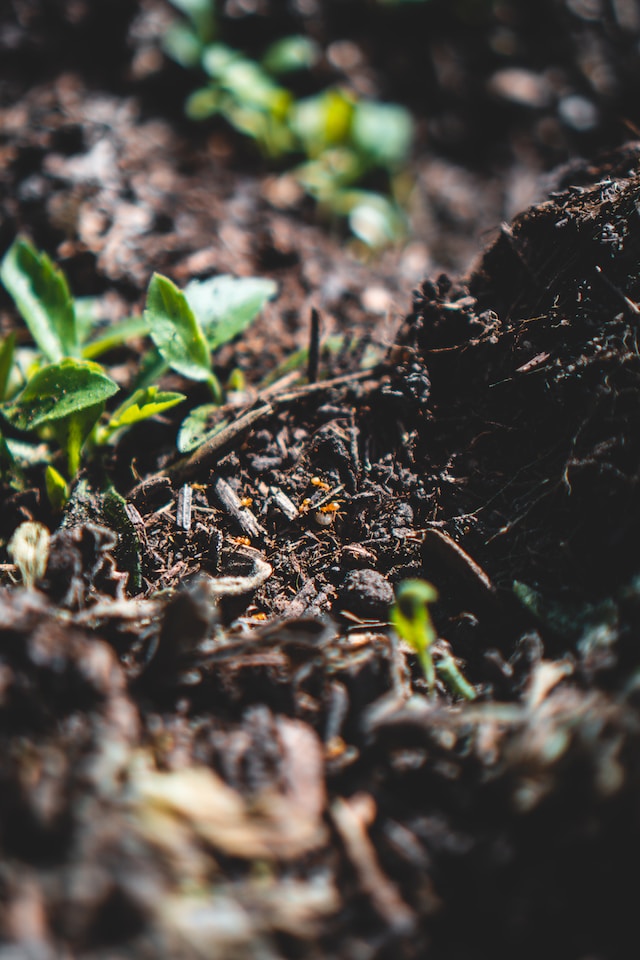
So, I urge you to take action and start your own composting worm bins today. By doing so, you are making a tangible difference in the health of our planet. Not only will you reduce your carbon footprint, but you will also witness the incredible transformation of waste into a valuable resource.
Whether you have a small apartment balcony or a spacious backyard, there is always room for vermicomposting. So, let’s embrace the power of composting worms and embark on a journey towards sustainable living. Together, we can make a positive impact on our surroundings and inspire others to do the same.
Don’t wait another day – start composting with worms and be a part of the solution! Together, we can create a greener, healthier, and more sustainable world for generations to come.
FAQs about Composting Worms for Gardening:
How do composting worms differ from earthworms found in my garden?
- Composting worms differ from earthworms primarily in their habitat preference and feeding habits. Composting worms thrive in organic material-rich environments, such as compost bins or specially designed worm bins, whereas earthworms generally inhabit garden soils.
- Composting worms also consume a wider variety of organic waste, including kitchen scraps, and help convert it into nutrient-rich castings.
Are composting worms easy to maintain?
- Composting worms are relatively low-maintenance creatures. They require a suitable bedding material like shredded newspaper or coconut coir, regular moisture levels, and a balanced diet of organic waste. They thrive in dark, moist, and well-ventilated environments with temperatures between 55°F and 77°F (13°C and 25°C). With proper care, they can flourish and multiply quickly, benefitting your garden.
How many composting worms should I get for my compost bin?
- The number of composting worms required depends on the size of your compost bin or the amount of organic waste generated. As a general guideline, you could start with 1 pound (approximately 500 worms) for a small composting system and increase the quantity as needed. Worms will multiply rapidly, so a smaller initial quantity can still yield significant results over time.
Can composting worms survive in outdoor compost piles or must they be kept indoors?
- While composting worms are primarily used in enclosed worm bins, some types, like red wigglers, can also survive in outdoor compost piles or worm trenches in mild climates.
- However, outdoor systems face potential challenges such as extreme temperature fluctuations and predation. Indoor bins offer greater control over environmental factors, making them the preferred choice for many gardeners.
How fast do composting worms produce nutrient-rich vermicompost?
- Composting worms have an impressive ability to break down organic waste. Under optimal conditions, a healthy worm population can convert their own body weight in organic material into castings within a week.
- However, factors like temperature, moisture content, and the worm population size can influence the speed of vermicomposting. Regularly harvesting castings and providing suitable conditions will maximize their productivity.
Can composting worms be used in traditional garden beds?
- While composting worms are not typically used directly in traditional garden beds, their castings (vermicompost) are highly beneficial as a powerful organic fertilizer and soil amendment. You can mix the vermicompost into your garden soil or use it as a top dressing around plants. This helps enrich the soil structure, improve water retention, and provide essential nutrients to support plant growth.
Are composting worms suitable for both indoor and outdoor gardening?
- Yes, composting worms are versatile and can benefit both indoor and outdoor gardening practices. They can be successfully utilized in apartment balconies, indoor containers, raised beds, or traditional gardens. Whether you’re growing houseplants, vegetables, herbs, or flowers, the addition of composting worms and their vermicompost will give your plants a significant boost and contribute to a healthy, sustainable garden ecosystem.
